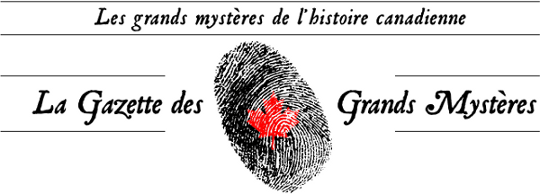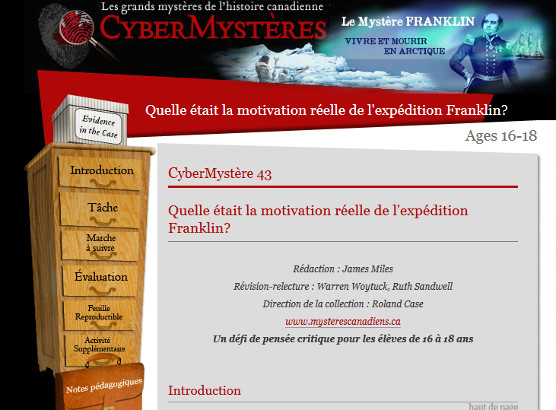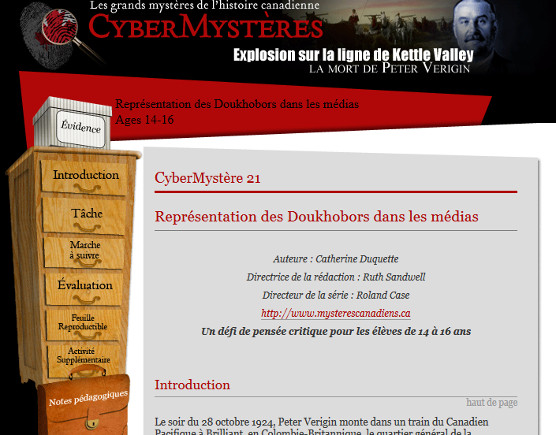Contact Us: admin@canadianmysteries.ca
Great Unsolved Mysteries in Canadian History:
News for Educators
|
|
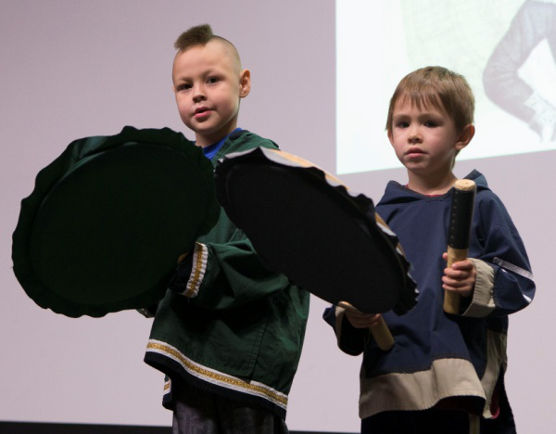
Inuit children perform at launch of The Franklin Mystery. Welcome to the latest edition of the GUMICH Gazette, a thrice-yearly newsletter to help keep educators up to date on news and tips for teaching with historical mysteries. We’re excited to introduce you to our new mystery website! We launched The Franklin Mystery: Life and Death in the Arctic in 2015 in Ottawa. Just scroll down for more information about the latest mystery, as well as other tools we offer for teaching Canadian history. And be sure to check out the Great Unsolved Mysteries in Canadian History (GUMICH) project, based at the University of Victoria. 

New Franklin Mystery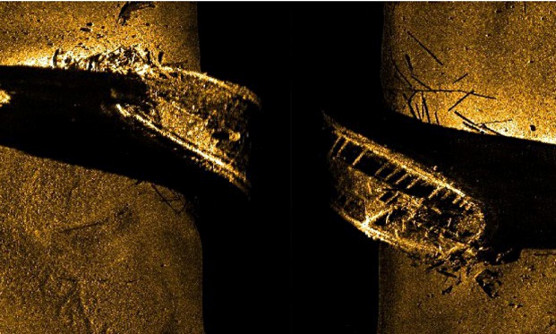
Wreck of HMS Erebus (Parks Canada) While Parks Canada divers were searching for the Franklin Expedition and discovering the remains of the HMS Erebus, we were busy working with Parks staff and other partners to create a new website about the famous history mystery. Don’t miss The Franklin Expedition: Life and Death in the Arctic, a comprehensive online resource about the Franklin mystery. When Sir John Franklin and his crew of 128 men left the United Kingdom in 1845, they were the best-equipped expedition ever sent into the Canadian Arctic – with the most powerful ships, the latest technology and supplied with food for three years. They never came back! What happened to the Franklin Expedition? Our new website offers one of the largest collections or original documents, maps, and images ever assembled about this expedition. We’ve also included Inuit accounts of the fate of Franklin’s party. Get the Franklin Mystery Poster!
Be sure to download free copies of the new Franklin Mystery poster. It’s the latest in a set of unique classroom posters that illustrate each of the mysteries featured on the GUMICH website. See them all here, where you can print the new Franklin Mystery poster for your classroom! Teaching Tool – New Franklin MysteryQuests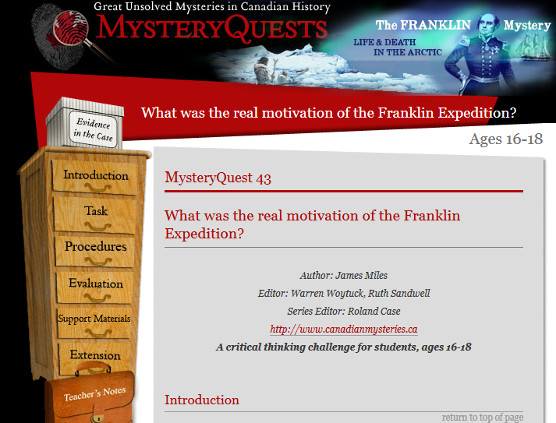
To help teachers use the Franklin Mystery with students, we’ve created five new MysteryQuests for various age groups. The quests were developed by The Critical Thinking Consortium, working with teachers and our education director Dr. Ruth Sandwell from the Ontario Institute for Studies in Education, University of Toronto. Each of the quests is a critical challenge for students of a specific age range, covering a different topic. Each quest includes complete instructions, primary documents, activity sheets, and evaluation forms. You’ll find all of these interactive, user-friendly lessons on our MysteryQuests website. Just go to the bottom of this page to find the new quests for the Franklin Mystery. Teaching Tool – Doukhobors in the Media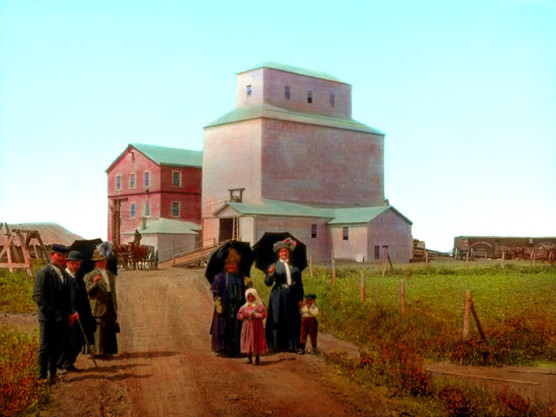 Flour mill with Doukhobor workers at Verigin, Saskatchewan in 1911. How were Doukhobor immigrants to Canada represented in the media? Your students can investigate this using information on the mystery website Explosion on the Kettle Valley Line: The Death of Peter Verigin. MysteryQuest21, designed for students ages 14-16, invites users to evaluate two articles written in 1924 about the controversial behaviour of the Doukhobor religious group,. Students must determine the extent to which each of the articles is fair or impartial reporting, and then defend or rewrite one of the articles. 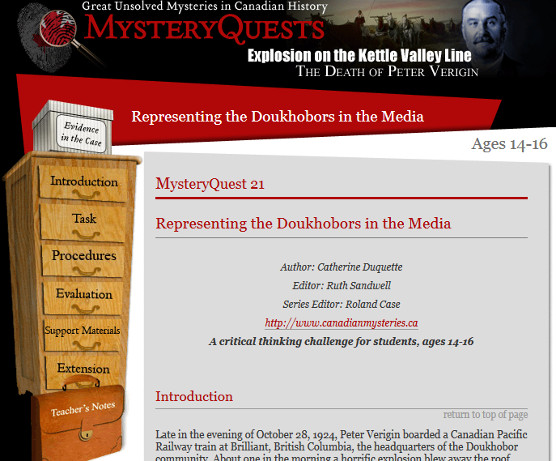
Opportunity for Civic Engagement: Canadian Women on Bank Notes Campaign
Proposed Lucy Maud Montgomery note from womenonbanknotes.ca If you’re interested in providing your students with an opportunity for civic engagement in an issue related to Canadian history, here’s your chance. GUMICH Executive Director Merna Forster is the leader of the national campaign calling for Canadian women on bank notes, and invites teachers to get their students involved. Back in July 2013, Forster launched the campaign with an online petition. Though it’s been signed by more than seventy thousand people and attracted widespread media attention, the Bank of Canada hasn’t taken action to celebrate notable women from Canadian history on bank notes. Student activities could include writing letters (and sharing them on social media) to key players like the Bank of Canada Governor Stephen Poloz, Prime Minister Justin Trudeau, Minister of Finance Bill Morneau (who must approve the notes) and other cabinet ministers such as Minister of Status of Women Patty Hajdu and Minister of Canadian Heritage Mélanie Joly. In a similar campaign in the United States, student letters such as this one to Obama had a big impact! 
Proposed Viola Desmond note from womenonbanknotes.ca Students could also submit suggestions for Canadian women on bank notes to Forster’s interactive site at womenonbanknotes.ca, and share their favourites on social media. Another possibility is the creation of short videos, such as this one featuring questions asked by young children in the United States: Where are girls in the money? Featured Source from The Franklin Mystery: Life and Death in the ArcticThis poem and article appeared in the Illustrated London News on May 24, 1845 following the departure of the Franklin Expedition. You can read more of the article online, and investigate what happened to the Franklin Expedition. 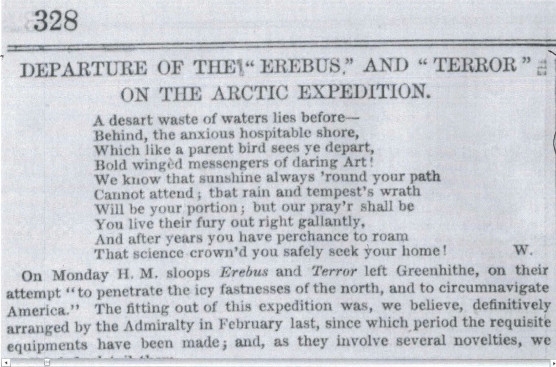
Newspaper clipping: Departure of the “Erebus,” and “Terror” on the Arctic Expedition, 1845 Featured Image from The Franklin Mystery: Life and Death in the Arctic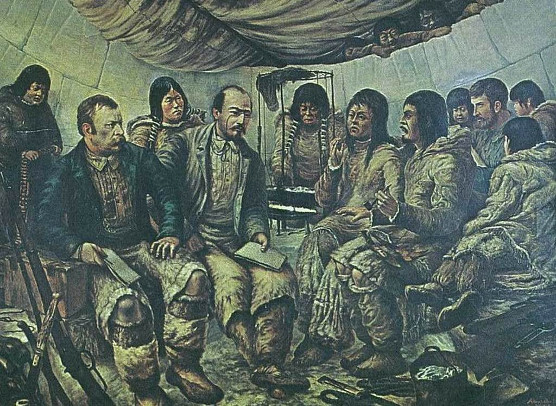 Published in The long Arctic search; the narrative of Lieutenant Frederick Schwatka, U.S.A., 1878-1880, seeking the records of the lost Franklin expedition. Marine Historical Association. In 1878-80, Lieutenant Frederick Schwatka of the United States Army organized the last major expedition of the nineteenth century to search for evidence of Franklin's party. Sponsored by the American Geographical Society, Schwatka and four colleagues sailed to Hudson Bay in 1878. The following year, they departed on an overland trek from Wager Bay towards King William Island, accompanied by a substantial Inuit party that included Ipirvik, who had assisted Charles Francis Hall on both of his expeditions in search of Franklin. Overall, they travelled 5,232 kilometres on this epic overland journey. Schwatka and his colleagues visited all sites of Franklin evidence that had been reported in and around King William Island. This image depicts Frederick Schwatka and companions meeting with members of Netsilingmiut in the Arctic ca. 1880. Learn more about this history mystery on the GUMICH site. Partner News – University of VictoriaProfessional Development Workshop for Teachers: Feb 19 The History Department at the University of Victoria is offering a professional development workshop for social studies and history teachers on February 19th. Topics will include teaching indigenous history, the Syrian refugee crisis, indigenous treaties in Canada, teaching political history comparatively, and B.C. environmental history. Pre-registration is required, and space is limited. 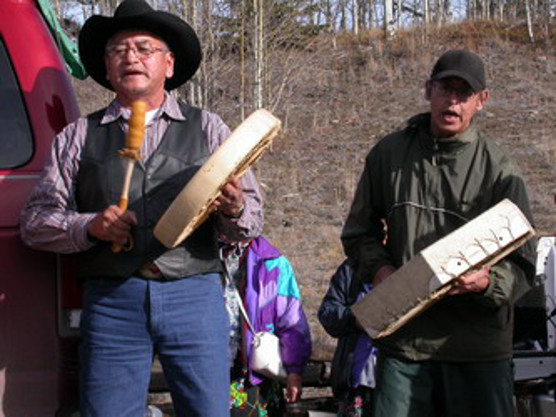 Tsilhqotin War Song sung at Lhatassain Memorial Day, October 26, 2003 (Liam Haggerty photo, GUMICH) |
|

